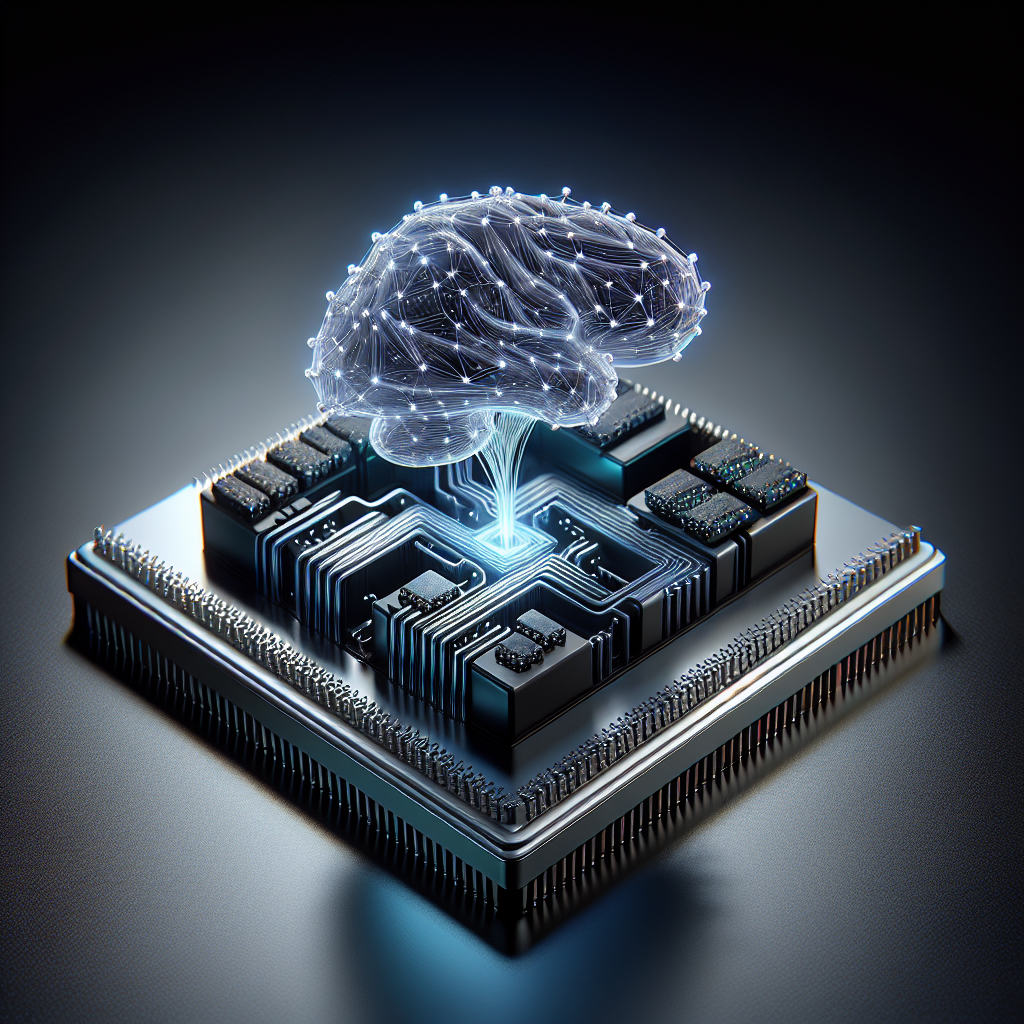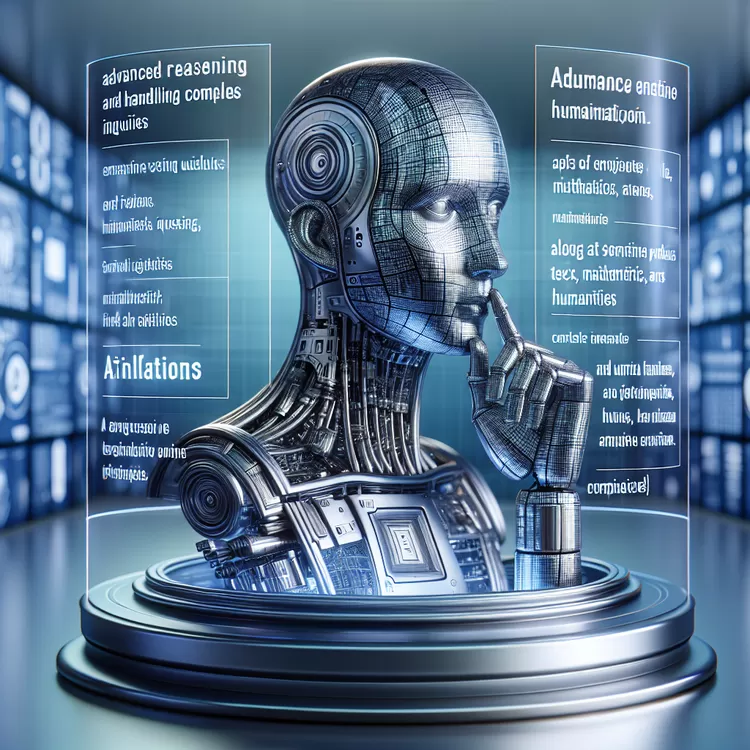Computers need a lot of electricity, especially for things like data centers, artificial intelligence (AI), and cryptocurrency. It’s predicted that by 2026, the amount of electricity these things use could double compared to 2022. So, some companies are trying to make computers that use less energy. One idea is called neuromorphic computing, where computers copy how our brains work. This technology has been around since the 1980s, but now it’s becoming more important because AI needs a lot of energy.
Neuromorphic computers are more energy efficient and faster than regular computers. They don’t have separate memory and processing units, which saves energy and time. They can also only turn on when there’s something to do, which saves power. Some neuromorphic computers use digital technology, while others use analog technology. Analog technology is good for analyzing data from the outside world because it uses continuous signals.
There are two main ways neuromorphic computing can be used. The first is for AI applications like image and video analysis, speech recognition, and chatbots. The second is for “edge computing,” which means processing data in real-time on devices like robots, cell phones, and wearable technology. These devices have limited power, so using neuromorphic computing can help them work better.
But there are still challenges to overcome. Making the software for neuromorphic chips is hard, and making the chips themselves is expensive. Companies like Intel and IBM are working on this, but it will probably take at least ten years before we see all the benefits of neuromorphic computing. In the future, different types of computers, like regular ones, neuromorphic ones, and quantum ones, will all work together to do different jobs.
Original news source: Could brain-like computers be a ‘competition killer’? (BBC)
🎧 Listen:
Slow
Normal
Fast
📖 Vocabulary:
| 1 | electricity | A form of energy that powers devices and machines |
| 2 | cryptocurrency | Digital money that uses encryption for security |
| 3 | neuromorphic | A type of computing that mimics how the human brain works |
| 4 | efficient | Doing something in a way that saves time and energy |
| 5 | processing | The act of handling or managing data |
| 6 | analog | Technology that uses continuous signals rather than digital ones |
| 7 | analyzing | Examining data to understand it better |
| 8 | recognition | The ability to identify or acknowledge something |
| 9 | edge computing | Processing data in real-time on devices with limited power |
| 10 | wearable | Technology that can be worn on the body |
| 11 | challenges | Difficulties or obstacles that need to be dealt with |
| 12 | overcome | To successfully deal with or solve a problem |
| 13 | benefits | Advantages or positive outcomes |
| 14 | quantum | A type of computing that uses the principles of quantum mechanics |
| 15 | applications | Uses or purposes for which something is designed |
Group or Classroom Activities
Warm-up Activities:
– News Summary
Instructions:
1. Divide the students into pairs or small groups.
2. Give each group a copy of the article.
3. Instruct the groups to read the article and summarize the main points in a paragraph or two.
4. After a designated amount of time, have each group share their summary with the class.
5. Discuss any differences or similarities in the summaries and have a class discussion about the topic.
– Opinion Poll
Instructions:
1. Divide the students into pairs or small groups.
2. Give each group a copy of the article.
3. Instruct the groups to read the article and come up with a question related to the topic.
4. Each group will then create an opinion poll question based on their question.
5. Have the groups share their poll questions with the class.
6. Conduct a class poll, with each student voting and explaining their choice.
7. Discuss the results and have a class discussion about the topic.
– Sketch It
Instructions:
1. Divide the students into pairs or small groups.
2. Give each group a copy of the article.
3. Instruct the groups to read the article and choose a key concept or idea.
4. Each group will then sketch a visual representation of their chosen concept or idea.
5. After a designated amount of time, have each group share their sketch with the class.
6. Have the class guess the concept or idea based on the sketch, and then discuss it as a class.
– Vocabulary Pictionary
Instructions:
1. Divide the students into pairs or small groups.
2. Give each group a copy of the article.
3. Instruct the groups to read the article and identify important vocabulary words or phrases.
4. Each group will then take turns selecting a word or phrase and drawing a visual representation of it.
5. The other group members must guess the word or phrase based on the drawing.
6. After a designated amount of time, have each group share their drawings and discuss the meanings of the words or phrases.
– Keyword Taboo
Instructions:
1. Divide the students into pairs or small groups.
2. Give each group a copy of the article.
3. Instruct the groups to read the article and choose key words or phrases.
4. Each group will then take turns describing the chosen word or phrase without using the actual word or any of its derivatives.
5. The other group members must guess the word or phrase based on the description.
6. After a designated amount of time, have each group share their descriptions and discuss the meanings of the words or phrases.
🤔 Comprehension Questions:
1. What are some examples of things that use a lot of electricity in computers?
2. How much is the amount of electricity used by computers predicted to increase by 2026?
3. What is one idea for making computers use less energy?
4. How are neuromorphic computers different from regular computers?
5. Why is analog technology good for analyzing data from the outside world?
6. What are the two main ways that neuromorphic computing can be used?
7. What is “edge computing” and why is neuromorphic computing helpful for it?
8. What are some challenges that need to be overcome for neuromorphic computing to become more widespread?
Go to answers ⇩
🎧✍️ Listen and Fill in the Gaps:
Computers need a lot of electricity, especially for things like data (1)______, (2)______ intelligence (AI), and cryptocurrency. It’s predicted that by 2026, the amount of electricity these things use could double compared to 2022. So, some (3)______ are trying to make computers that use less energy. One idea is called neuromorphic (4)______, where computers copy how our brains work. This technology has been around since the 1980s, but now it’s becoming more important because AI needs a lot of energy.
(5)______ computers are more energy efficient and faster than regular computers. They don’t have (6)______ memory and processing units, which saves energy and time. They can also only turn on when there’s something to do, which saves power. Some (7)______ computers use digital (8)______, while others use analog technology. Analog technology is good for analyzing data from the outside world because it uses continuous signals.
There are two main ways neuromorphic computing can be used. The (9)______ is for AI applications like (10)______ and video analysis, speech (11)______, and chatbots. The second is for “edge computing,” which means processing data in real-time on devices like robots, cell (12)______, and wearable technology. These devices have limited power, so using neuromorphic computing can help them work better.
But there are still (13)______ to (14)______. Making the software for neuromorphic chips is hard, and (15)______ the chips themselves is expensive. Companies like Intel and IBM are working on this, but it will probably take at least ten years before we see all the benefits of neuromorphic computing. In the future, different types of computers, like (16)______ ones, neuromorphic ones, and quantum ones, will all work together to do different jobs.
Go to answers ⇩
💬 Discussion Questions:
Students can ask a partner these questions, or discuss them as a group.
1. What is neuromorphic computing and how is it different from regular computing?
2. How do neuromorphic computers save energy and time compared to regular computers?
3. Do you think it’s important for computers to use less energy? Why or why not?
4. How would you feel if all computers in the future were neuromorphic? Why?
5. Do you think AI applications like image and video analysis are useful? Why or why not?
6. What are some examples of edge computing devices that can benefit from neuromorphic computing?
7. Why do you think making the software for neuromorphic chips is hard?
8. Would you like to have a robot or wearable technology that uses neuromorphic computing? Why or why not?
9. What challenges do you think companies like Intel and IBM face in developing neuromorphic computing?
10. How do you think different types of computers, like regular, neuromorphic, and quantum ones, can work together in the future?
11. What other ways can you think of to make computers more energy efficient?
12. Do you think the benefits of neuromorphic computing are worth the cost of making the chips? Why or why not?
13. How do you think neuromorphic computing can improve our daily lives?
14. What do you think are the potential drawbacks of relying too much on AI and neuromorphic computing?
15. Would you like to learn more about neuromorphic computing? Why or why not?
Individual Activities
📖💭 Vocabulary Meanings:
Match each word to its meaning.
Words:
1. electricity
2. cryptocurrency
3. neuromorphic
4. efficient
5. processing
6. analog
7. analyzing
8. recognition
9. edge computing
10. wearable
11. challenges
12. overcome
13. benefits
14. quantum
15. applications
Meanings:
(A) Digital money that uses encryption for security
(B) Technology that uses continuous signals rather than digital ones
(C) Advantages or positive outcomes
(D) A form of energy that powers devices and machines
(E) The act of handling or managing data
(F) A type of computing that uses the principles of quantum mechanics
(G) Difficulties or obstacles that need to be dealt with
(H) Processing data in real-time on devices with limited power
(I) To successfully deal with or solve a problem
(J) A type of computing that mimics how the human brain works
(K) The ability to identify or acknowledge something
(L) Doing something in a way that saves time and energy
(M) Examining data to understand it better
(N) Uses or purposes for which something is designed
(O) Technology that can be worn on the body
Go to answers ⇩
🔡 Multiple Choice Questions:
1. Why do computers need a lot of electricity?
(a) For data centers, artificial intelligence, and cryptocurrency
(b) For playing video games
(c) For watching movies
(d) For sending emails
2. What is neuromorphic computing?
(a) Computers that use a lot of energy
(b) Computers that copy how our brains work
(c) Computers that have separate memory and processing units
(d) Computers that can only turn on when there’s something to do
3. How are neuromorphic computers different from regular computers?
(a) They have separate memory and processing units
(b) They use analog technology
(c) They can only turn on when there’s something to do
(d) They are more energy efficient and faster
4. What is analog technology good for?
(a) Analyzing data from the outside world
(b) Playing video games
(c) Sending emails
(d) Watching movies
5. What are two main ways neuromorphic computing can be used?
(a) Gaming and social media
(b) AI applications and edge computing
(c) Email and video calls
(d) Watching movies and listening to music
6. What is “edge computing”?
(a) Processing data in data centers
(b) Processing data on regular computers
(c) Processing data in real-time on devices like robots, cell phones, and wearable technology
(d) Processing data using quantum computers
7. What are some challenges with neuromorphic computing?
(a) Making the software for regular computers is hard and making the chips themselves is expensive
(b) Making the software for quantum computers is hard and making the chips themselves is expensive
(c) Making the software for analog computers is hard and making the chips themselves is expensive
(d) Making the software for neuromorphic chips is hard and making the chips themselves is expensive
8. How long will it probably take before we see all the benefits of neuromorphic computing?
(a) At least five years
(b) At least twenty years
(c) At least ten years
(d) At least one year
Go to answers ⇩
🕵️ True or False Questions:
1. There are three main applications for neuromorphic computing: AI tasks like image and video analysis, speech recognition, and chatbots, and “edge computing” for real-time data processing on devices like robots and smartphones.
2. Computers, especially data centers, AI, and cryptocurrency, do not require a significant amount of electricity.
3. Neuromorphic computers can only turn on when there is a task to perform, conserving power.
4. Some companies are developing computers that use less energy, such as neuromorphic computing.
5. It is uncertain that by 2026, the electricity consumption of these technologies could double compared to 2022.
6. Neuromorphic computers are more energy efficient and faster than regular computers.
7. Making hardware for neuromorphic chips is challenging, and producing the chips themselves is expensive, but companies like Intel and IBM are working on overcoming these obstacles.
8. Neuromorphic computers do not have separate memory and processing units, which saves energy and time.
Go to answers ⇩
📝 Write a Summary:
Write a summary of this news article in two sentences.
Check your writing now with the best free AI for English writing!
Writing Questions:
Answer the following questions. Write as much as you can for each answer.
Check your answers with our free English writing assistant!
1. What are some things that use a lot of electricity in computers?
2. What is the prediction for the amount of electricity these things will use by 2026?
3. How do neuromorphic computers save energy and time compared to regular computers?
4. What are the two main ways that neuromorphic computing can be used?
5. What are some challenges that need to be overcome for neuromorphic computing to become more widespread?
✅ Answers
🤔✅ Comprehension Question Answers:
1. What are some examples of things that use a lot of electricity in computers?
Data centers, artificial intelligence (AI), and cryptocurrency.
2. How much is the amount of electricity used by computers predicted to increase by 2026?
It is predicted to double compared to 2022.
3. What is one idea for making computers use less energy?
One idea is called neuromorphic computing, where computers copy how our brains work.
4. How are neuromorphic computers different from regular computers?
Neuromorphic computers don’t have separate memory and processing units, saving energy and time. They can also only turn on when there’s something to do, saving power.
5. Why is analog technology good for analyzing data from the outside world?
Analog technology uses continuous signals, which is good for analyzing data from the outside world.
6. What are the two main ways that neuromorphic computing can be used?
The first is for AI applications like image and video analysis, speech recognition, and chatbots. The second is for “edge computing,” which means processing data in real-time on devices like robots, cell phones, and wearable technology.
7. What is “edge computing” and why is neuromorphic computing helpful for it?
Edge computing is processing data in real-time on devices like robots, cell phones, and wearable technology. Neuromorphic computing is helpful for edge computing because it can make these devices work better by using less power.
8. What are some challenges that need to be overcome for neuromorphic computing to become more widespread?
Making the software for neuromorphic chips is hard, and making the chips themselves is expensive.
Go back to questions ⇧
🎧✍️✅ Listen and Fill in the Gaps Answers:
(1) centers
(2) artificial
(3) companies
(4) computing
(5) Neuromorphic
(6) separate
(7) neuromorphic
(8) technology
(9) first
(10) image
(11) recognition
(12) phones
(13) challenges
(14) overcome
(15) making
(16) regular
Go back to questions ⇧
📖💭✅ Vocabulary Meanings Answers:
1. electricity
Answer: (D) A form of energy that powers devices and machines
2. cryptocurrency
Answer: (A) Digital money that uses encryption for security
3. neuromorphic
Answer: (J) A type of computing that mimics how the human brain works
4. efficient
Answer: (L) Doing something in a way that saves time and energy
5. processing
Answer: (E) The act of handling or managing data
6. analog
Answer: (B) Technology that uses continuous signals rather than digital ones
7. analyzing
Answer: (M) Examining data to understand it better
8. recognition
Answer: (K) The ability to identify or acknowledge something
9. edge computing
Answer: (H) Processing data in real-time on devices with limited power
10. wearable
Answer: (O) Technology that can be worn on the body
11. challenges
Answer: (G) Difficulties or obstacles that need to be dealt with
12. overcome
Answer: (I) To successfully deal with or solve a problem
13. benefits
Answer: (C) Advantages or positive outcomes
14. quantum
Answer: (F) A type of computing that uses the principles of quantum mechanics
15. applications
Answer: (N) Uses or purposes for which something is designed
Go back to questions ⇧
🔡✅ Multiple Choice Answers:
1. Why do computers need a lot of electricity?
Answer: (a) For data centers, artificial intelligence, and cryptocurrency
2. What is neuromorphic computing?
Answer: (b) Computers that copy how our brains work
3. How are neuromorphic computers different from regular computers?
Answer: (d) They are more energy efficient and faster
4. What is analog technology good for?
Answer: (a) Analyzing data from the outside world
5. What are two main ways neuromorphic computing can be used?
Answer: (b) AI applications and edge computing
6. What is “edge computing”?
Answer: (c) Processing data in real-time on devices like robots, cell phones, and wearable technology
7. What are some challenges with neuromorphic computing?
Answer: (d) Making the software for neuromorphic chips is hard and making the chips themselves is expensive
8. How long will it probably take before we see all the benefits of neuromorphic computing?
Answer: (c) At least ten years
Go back to questions ⇧
🕵️✅ True or False Answers:
1. There are three main applications for neuromorphic computing: AI tasks like image and video analysis, speech recognition, and chatbots, and “edge computing” for real-time data processing on devices like robots and smartphones. (Answer: False)
2. Computers, especially data centers, AI, and cryptocurrency, do not require a significant amount of electricity. (Answer: False)
3. Neuromorphic computers can only turn on when there is a task to perform, conserving power. (Answer: True)
4. Some companies are developing computers that use less energy, such as neuromorphic computing. (Answer: True)
5. It is uncertain that by 2026, the electricity consumption of these technologies could double compared to 2022. (Answer: False)
6. Neuromorphic computers are more energy efficient and faster than regular computers. (Answer: True)
7. Making hardware for neuromorphic chips is challenging, and producing the chips themselves is expensive, but companies like Intel and IBM are working on overcoming these obstacles. (Answer: False)
8. Neuromorphic computers do not have separate memory and processing units, which saves energy and time. (Answer: True)
Go back to questions ⇧













